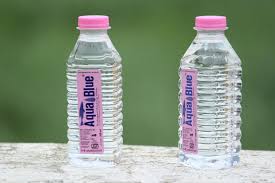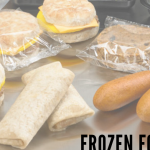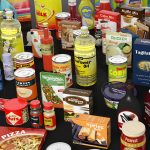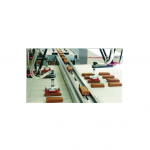
U.S. Synthetic Plastic Barrier Market to See 2.4% Annual Growth Through 2022
The total U.S. market for synthetic plastic barrier resins was 9.4 billion pounds in 2017, and production should grow at an average annual rate of 2.5% through 2022, according to a report by BCC Research. Food and beverage packaging accounts for 95% of the U.S. market, with other smaller but essential markets including chemical and industrial products packaging in the form of automobile gasoline tanks and healthcare products packaging. By 2022, the packaging barrier resin market volume could reach 10.6 billion pounds.
The market is trending toward producing more complicated and sophisticated multilayer barrier structures which use more but thinner layers, according to the report Plastics for Barrier Packaging. One major breakthrough could allow for the packaging of beer using polyethylene terephthalate (PET)–this product has already been tested successfully in Europe, and adoption in the United States could present a significant new market opportunity for PET barrier packaging.
Leading suppliers in the barrier packaging industry include Arkema, BASF, Charter Nex Films, Chevron Phillips, Dow Chemical, E.I. Dupont, ExxonMobil, Honeywell, Mitsubishi Chemical, Plastipak Packaging, Printpack, Tekni-Films and Winpak.
Research Highlights
Barrier resins will lead the domestic packaging barrier resin market in 2022, with an estimated 9.6 billion pounds of volume. Permeable films will follow with 784 million pounds, then tie layer resins with 226 million pounds of volume.
The advent of bioplastics could mean that resins are products from resources such as crops, grasses and seeds, and decent-sized bioplastic plants are now being built, with marketing efforts underway to find profitable markets.
With economic activity increasing and cheap natural gas available, the domestic plastic barrier packaging market looks bright. Merger and acquisition activity is on the rise again.
“Most of the goods that the public buys in developed societies are packaged, as are an increasing number in developing countries as well,” said report author Charles Forman. “One side effect of all this packaging has been a constant barrage of complaints from activists that products are ‘overpackaged,’ and this excess packaging contributes to our big waste load. Many companies have reacted and continue to react to these complaints by reducing or changing their packaging to make the final package less complex or using less packaging material.”
Read more: U.S. Synthetic Plastic Barrier Market to See 2.4% Annual Growth Through 2022





